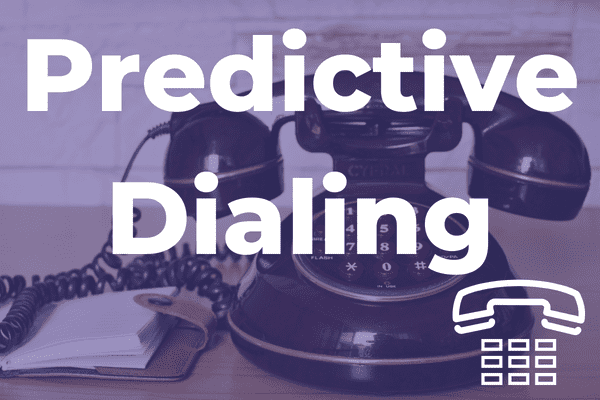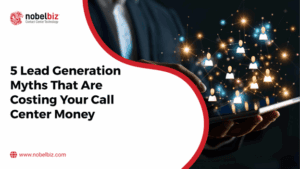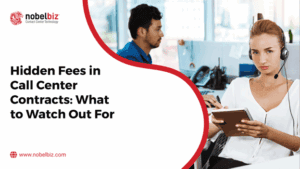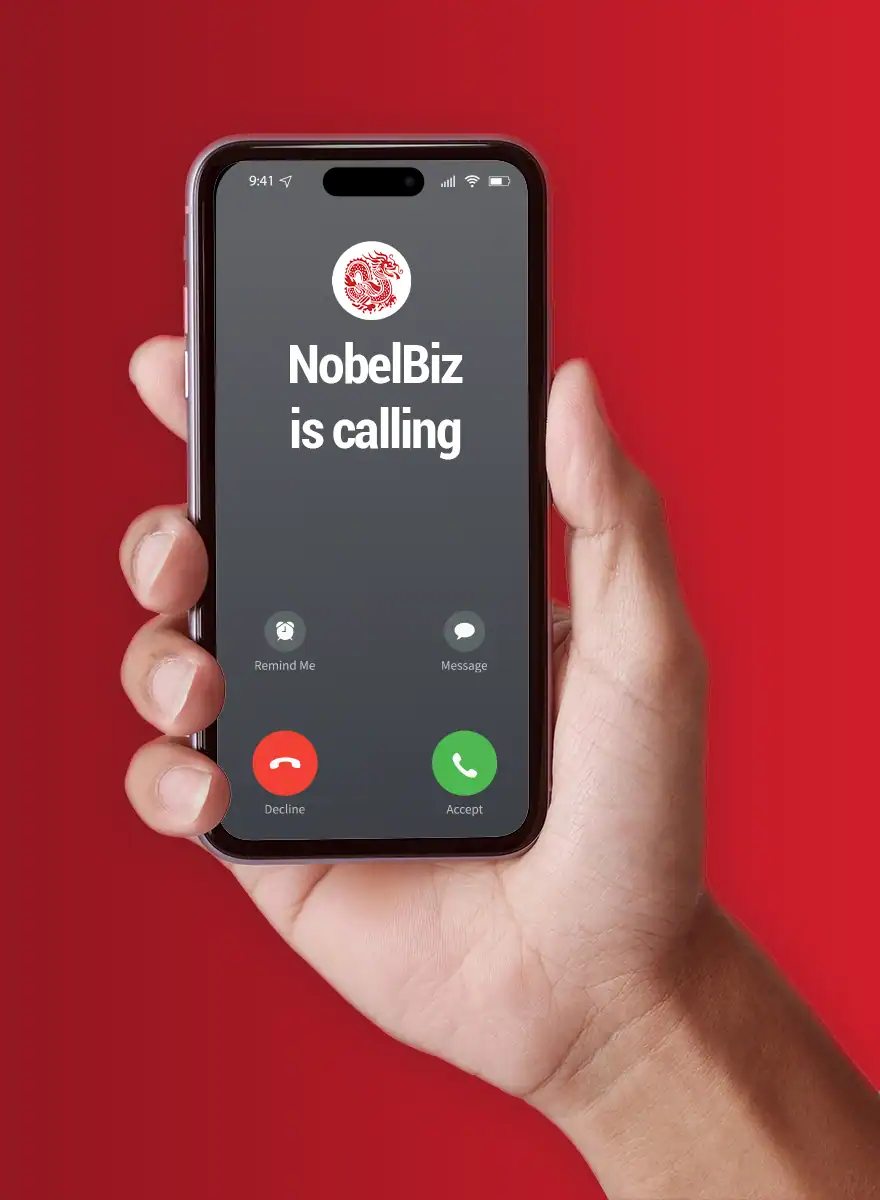As the adage goes, “Lost time is never found again.” And it perfectly suits our topic for this article.
Predictive dialers occupy a cornerstone place in every outbound calling strategy as they shorten the time between answered calls, enabling your team to connect with your customers and reach new leads faster.
The predictive dialer is the pinnacle of technology in terms of outbound efficiency, and its benefits encompass lead generation, customer service, fundraising, and debt collection, among others.
In this article, we will define predictive dialers, enumerate their different use cases, and provide a step-by-step guide to set up your predictive dialing campaign successfully.
What is Predictive Dialer Software?
Let’s start with the basics.
Predictive dialer software is a computer program that contact centers use to automate outbound calls. It automatically dials multiple phone numbers simultaneously and uses algorithms to predict when an agent will be available to handle a call.
The software utilizes predictive analytics and advanced machine learning to calculate the average call handling time and the average time between calls. This information predicts (hence its name) when an agent will be available to take another call and adjusts the dialed calls accordingly.
The final goal of a predictive dialer system is to increase agents’ productivity by freeing up their time to focus on customer interactions instead of wasting time between calls. Dialing multiple numbers simultaneously and filtering out defective calls, the predictive system lets agents focus on handling customers’ inquiries promptly and efficiently.
One of its main benefits is its ability to filter out busy signals, disconnected numbers, and voicemails, ensuring that agents only connect to live calls, consequently increasing the efficiency of the contact center.
Predictive dialer software can also play pre-recorded messages, such as greetings or appointment reminders, before connecting the call to an agent. Moreover, it can provide real-time analytics to managers, allowing them to monitor call center performance and make adjustments as needed.
The next chapter will explain the intricacies behind predictive dialer software and how it functions.
How do Predictive Dialers Work?
Predictive dialers work by automating the process of outbound calling in a contact center by placing multiple calls at once, skipping the defective ones, and connecting live agents to the line once someone answers.
Most employees will never need to know how this system works, but for informational purposes, we will provide a thorough breakdown of how it functions:
- Firstly, the predictive dialer software begins by analyzing a call list or database of phone numbers.
- The software then uses algorithms and machine learning techniques to predict when an agent will become available to take a call. This analysis is based on historical customer data and traffic patterns.
- After that, the software starts dialing multiple phone numbers simultaneously, using the predicted availability of agents to determine the pace of dialing. The purpose is to maximize the number of live connections an agent can handle.
- As soon as a call is answered, the software determines whether a live person or an answering machine/voicemail system is on the other end.
- If a live person answers the call, the software immediately connects the call to an available agent.
- If the call is answered by an answering machine or voicemail system, the software may leave a pre-recorded message, wait for a predetermined time, or simply hang up and move on to the next call. The software can also detect busy signals, disconnected numbers, and other non-productive calls and filter them out before connecting a call to an agent
- While the call is ongoing, the software’s work is not done yet. First, it provides the agent with relevant information about the caller, such as their name, location, and reason for calling, depending on how the software is configured.
- Once the call is completed, the software can automatically move on to the next call in the queue, again using predictive algorithms to determine the optimal dialing pacing.
Overall, the goal of predictive dialers is to minimize the time agents spend waiting for calls to connect while ensuring that they only connect to live calls that are most likely to result in a successful outcome. This can help increase the efficiency of call centers and improve the overall customer experience.
As you can see, the goal of a predictive dialer system is to cut the hassle of outbound calls. Ensuring that agents only connect to calls with a positive outcome minimizes the time agents spend waiting for calls and helps increase the contact center’s efficiency.
The next section will discuss the different types of predictive dialer campaigns.

Types of Predictive Dialer Campaigns
Contact centers use different predictive dialer campaigns to optimize their outbound operations, depending on the desired outcome they would like to achieve.
The following are some of the most common outbound predictive dialing campaigns.
Customer Service Calls
In a customer service campaign, the primary goal is to resolve customer issues or inquiries as efficiently as possible.
Predictive dialer software improves customer service operations as it allows to:
- Automate the process of calling customers back who have requested a call from an agent. This can reduce customer wait times and ensure that agents promptly address their issues.
- Screen calls and route them to the most appropriate agent based on the customer’s needs and/or inquiry type. This ensures that customers are connected to the right agent. And that their issues are resolved in an efficient and timely manner.
- Track call center metrics, such as average handling time, first-call resolution rate, and customer satisfaction scores. This information is useful in identifying areas for improvement and optimizing call center operations.
Lead Generation & Telemarketing
Telemarketing is another application of predictive dialing campaigns. This type of campaign generates leads or closes sales with potential customers.
Predictive dialer software is extremely useful in these cases, as it offers:
- Increased efficiency: As we mentioned before, the inherent predictive dialing software places numerous calls at once, allowing it to increase the number of daily calls, reducing the time agents spend waiting between calls and, eventually, the overall contact center efficiency.
- Improved call quality: By filtering out disconnected numbers, voicemails, and other non-productive calls. Agents spend more time talking to live prospects, which improves the quality of the calls and increases the chances of generating leads.
- Better lead management: By tracking call outcomes and providing real-time feedback to agents. This can help agents prioritize leads based on their likelihood of converting and adjust their approach accordingly.
However, it’s important to remember that predictive dialers must comply with regulatory guidelines. Such as the Telephone Consumer Protection Act (TCPA). This means that companies must ensure they have obtained the necessary consent before making marketing calls. And they must also provide an opt-out option for recipients who don’t want to receive future calls.
Fundraising & Charity
Non-profit organizations use fundraising campaigns to solicit donations from supporters. These campaigns often involve cold-calling potential donors and providing them with information about the organization and its mission. This is where predictive dialing comes into play, as it ensures agents connect to valid lines instead of voicemails or answering machines.
Collections
Collections campaigns have one goal. And that is to contact customers who have outstanding debts or due payments. These campaigns often involve following up with customers multiple times to collect payments or negotiate payment plans. And again, this is a perfect use for predictive dialer software, as it shows all the relevant information related to concerned customers, facilitating the agents’ tasks.
Each type of predictive dialer campaign has its own unique goals and requirements. By selecting the appropriate campaign type and configuring the predictive dialer software accordingly, contact centers can optimize their outbound calling operations and achieve their desired outcomes.

How to Plan and Launch a Winning Predictive Dialer Campaign
Setting Up Your Predictive Dialer Campaign: A Step-by-Step Guide
Planning and launching a successful predictive dialer campaign requires a strategic approach. That considers the goals of the campaign, the target audience, and the resources available, among other elements that we will develop in this section.
The following is a step-by-step guide to setting up a predictive dialer campaign:
1 -Define Your Campaign Goals:
Defining campaign goals is an essential first step in setting up any outbound calling campaign, including a predictive dialer campaign. With clear campaign goals, it can be easier to determine which metrics to track, which dialer settings to use, and how to measure campaign success.
When setting campaign goals for a predictive dialer campaign, consider asking the following questions:
- What is the purpose of the campaign? Am I trying to generate leads, close sales, or conduct surveys?
- Who is my target audience? Am I calling existing customers, prospects, or a mix of both?
- How many calls do I want to make per day, week, or month?
- What is my desired conversion rate? How many leads, sales, or completed surveys do I want to achieve?
- What is my budget for the campaign? How much am I willing to spend on dialer software, agent salaries, and other campaign-related expenses?
Once you have clear answers to these questions, you can identify the right audience, develop your message, and choose the right dialer settings to optimize campaign performance and achieve your desired outcomes.
2 -Identify Your Target Audience:
Identifying the target audience is a crucial first step in setting up a predictive dialer campaign. You need to know who you are trying to reach to determine the best campaign approach and optimize your dialer settings to achieve your desired outcomes.
To identify your target audience for a predictive dialer campaign, ask yourself this:
- Who are my current customers or prospects? Consider their demographics, interests, and behaviors.
- What problem does my product or service solve, and whom would it benefit the most? Consider the pain points and needs of your potential customers.
- Are there any trends or patterns in my sales data or market research that can help me identify my target audience?
- What are my competitors doing? Who are they targeting, and how are they positioning their products or services?
Once you clearly understand your target audience, you can develop a list of phone numbers to call and set up your predictive dialer campaign with appropriate dialing settings. Consider segmenting your list based on different audience characteristics to tailor your approach and optimize your campaign performance.
3 -Develop Your Message:
Yes, developing the message is an important step in setting up a predictive dialer campaign after identifying the campaign goals and target audience.
You can then focus on developing a message that will resonate with your audience and achieve your desired outcomes.
When planning your message for a predictive dialer campaign, it’s important to remember that you have a limited amount of time to capture the recipient’s attention and convey your message. Here are some tips for creating an effective message:
- Start with a clear and attention-grabbing opening statement that is relevant to your target audience.
- Use simple and easy-to-understand language, and avoid technical jargon or overly complex explanations.
- Focus on the benefits of your product or service, highlighting how it can solve a problem or meet a need.
- Use a tone that is professional yet friendly, and tailor your language to your target audience.
- Keep the message short and to the point, typically under 30 seconds.
- Include a clear call-to-action that prompts the recipient to take a desired action.
- Test and refine your message over time to ensure it resonates with your audience and achieves your desired goals.
4 -Choose the Right Dialer Settings:
Selecting the appropriate dialer settings is a critical step in setting up a predictive dialer campaign.
To select the appropriate dialer settings for your predictive dialer campaign, you should take into consideration the following elements:
- Dialing mode: Choose the dialing mode that best fits your campaign goals and target audience. Common dialing modes include power, preview, and progressive dialing.
- Pacing ratio: This is the ratio of the number of phone numbers dialed to the number of agents available to handle calls. Choose a pacing ratio that maximizes agent productivity while minimizing abandoned calls and wait times for customers.
- Maximum abandon rate: This is the maximum percentage of calls that can be abandoned before the dialer automatically adjusts its pacing. Set this rate based on your campaign goals and target audience, ensuring that it does not negatively impact the customer experience.
- Answering machine detection: This setting determines how the dialer handles answering machines. Choose a setting that minimizes calls that are answered by machines and maximizes the number of live connections with customers.
- Caller ID: Choose the caller ID that is most appropriate for your campaign goals and target audience. This could be your company name, a local number, or a toll-free number.
- Other settings: Other dialer settings may be relevant to your campaign, such as the time of day to call, the number of rings before a call is considered abandoned, and the maximum number of calls per day per contact.
5 -Train Your Agents:
Training agents is a critical step in setting up a predictive dialer campaign. Even with the most reliable tools, you can only achieve great results with a qualified workforce.
To effectively train agents for a predictive dialer campaign, you should:
- Familiarize agents with the campaign goals: Ensure that agents have a clear understanding of the campaign goals and how their role contributes to achieving those goals.
- Provide product or service training: Ensure that agents have a thorough understanding of the products/services offered and can effectively communicate its features and benefits to customers.
- Provide dialer training: Train agents on the specific dialer settings being used for the campaign, including how to manage call pacing, how to handle answering machines, and how to manage call dispositions.
- Train agents on handling objections: Teach agents how to handle common objections from customers.Including how to provide alternative solutions and how to overcome objections.
- Train agents on compliance: Ensure that agents are trained on any legal or regulatory requirements related to the campaign, including rules around consent, privacy, and data protection.
- Roleplay and practice: Allow agents to practice their scripts and techniques in a safe environment, providing feedback and coaching to help them improve.
- Continuously monitor and coach agents: Monitor agent performance and provide regular coaching and feedback to help them improve their skills and performance.
6 -Test Your Campaign:
Testing the campaign is an important step, done after all the other steps have been completed. This will help you identify any potential issues with your campaign before it goes live and ensure that it is optimized for success.
To effectively test your predictive dialer campaign, make sure to
- Test the dialer settings: Test the dialer settings to ensure that they are working as expected, including pacing ratio, abandon rate, answering machine detection, and caller ID.
- Test the message: Test the message with a small sample of your target audience to ensure that it resonates with them and achieves your desired outcomes.
- Test agent performance: Conduct role-playing exercises to test agent performance and ensure that they are effectively handling calls and objections.
- Test compliance: Ensure that your campaign is compliant with any legal or regulatory requirements, including rules around consent, privacy, and data protection.
- Monitor and adjust: Monitor the performance of your campaign and adjust as needed, such as tweaking the dialer settings or refining the message.
7 -Launch Your Campaign:
This is the moment of truth, the culmination of all your predictive dialing campaign efforts. But before launching, make sure you are taking into consideration the following elements:
- Ensure that all the necessary equipment is in place: This includes ensuring that your predictive dialer software is set up and running, your agents are trained and ready, and any other required hardware or software is in place.
- Start the campaign: Launch your predictive dialer campaign and ensure that it is operating as expected, monitoring its performance and adjusting as needed.
- Monitor campaign performance: Continuously monitor the performance of your campaign, including the number of calls made, the number of leads generated, and the conversion rate.
- Analyze results: Analyze the results of your campaign to identify areas for improvement and make any necessary adjustments to your campaign. Such as refining your message, tweaking your dialer settings, or providing additional agent training.
By launching your predictive dialer campaign after completing all the necessary steps, you can maximize its effectiveness and ensure that it meets your campaign goals.
Following this guide will enable you to successfully initiate a predictive dialing campaign to help you enhance your contact center results and provide a seamless customer experience.
Next, we will discuss the challenges you may face when setting up predictive dialing and the tips to overcome them.
Common Challenges in Predictive Dialing and How to Overcome Them
Predictive dialing is an effective way to increase the efficiency of your outbound call center operations. However, many challenges may arise.
The following are common challenges in predictive dialing, accompanied by approaches to overcome them:
Compliance
One of the biggest challenges in predictive dialing is ensuring compliance with regulations such as the Telephone Consumer Protection Act (TCPA) and other applicable laws.
To rest assured about this, ensure your dialing system is configured to comply with all relevant regulations. Obtain the necessary consent from recipients, and provide an opt-out option for those who do not wish to receive future calls.
With our OMNI+, you don’t have to fret about compliance and regulations because that’s our job. You will be able to provide a worry-free and seamless experience to your customers without having to be pestered about whether you’re breaking the law or not.
Our Call Guard Ecosystem offers comprehensive dialing capabilities that help increase outbound call volumes in both consent and non-consent scenarios while mitigating TCPA compliance risk.
Abandoned Calls
Call abandonment is a key performance indicator that evaluates the effectiveness of a contact center. The goal is to deliver the finest service possible to consumers. Observing this KPI enables you to detect and address your contact center’s dysfunctions.
Predictive dialing can result in a high number of abandoned calls, which can negatively impact your business reputation and compliance. To overcome this challenge, configure your dialing system to minimize the number of abandoned calls by optimizing the dialing pace, setting appropriate thresholds for dropped and abandoned calls, and providing agents with the necessary training and tools to manage the calls effectively.
Low Contact Rates
Another common challenge in predictive dialing is low contact rates, which can impact the effectiveness of your campaign. A strategy to overcome this is to use a blended dialing strategy that combines predictive dialing with other dialing modes such as preview dialing, which is another built-in feature of our Omnichannel Contact Center Software. Also, make sure that you are using a high-quality call list with accurate and up-to-date contact information.
Agent Burnout
Predictive dialing can result in a high volume of calls for agents, leading to burnout and reduced productivity. It is a must to ensure that agents are adequately trained and equipped to effectively manage the volume of calls. You should also consider using call scripting and automating routine tasks to provide agents with the necessary tools to manage their workload.
Technology Limitations
Finally, technology limitations can pose a challenge to predictive dialing. To remedy it, choose a dialing system that provides the necessary features and capabilities to support your campaign goals. Additionally, ensure that your system is up-to-date and you have the necessary resources to manage arising issues.
By understanding and addressing these common challenges, you can overcome them and ensure the success of your predictive dialing campaign. And consequently, enhance your contact center efficiency, and provide the best experience possible for your customers.
Take Action and Start Your Predictive Dialer Campaign Today with NobelBiz!
Predictive dialer software is a powerful addition that has revolutionized contact centers’ operations. It automates the dialing process, saving time and increasing productivity. It uses complex algorithms to predict when agents will be available and when to place calls, resulting in more successful connections with customers.
However, some concerns are associated with predictive dialer software, such as compliance with regulations, the potential for agent burnout, and the risk of irritating customers with frequent calls. Therefore, it is important for companies to use this technology responsibly and in compliance with relevant laws and regulations
All of these are already handled with our Omnichannel contact center solution OMNI+. Not only will it provide you with everything you’ll need to set up your dialer software campaign, but paired with our voice carrier, your contact center performance will soar. Without any need to worry about compliance because we have got you covered, ensuring the best conditions for you to exceed your customers’ expectations.

Michael McGuire is a contact center industry expert with almost two decades of experience in the space. His experience includes roles as Director of Contact Center Digital Transformation at NobelBiz, and as Director of Operations at FLS Connect, managing multiple call centers. As President of Anomaly Squared and Targeted Metrics, Michael successfully transitioned companies into remote operations and significantly boosted revenues. With a strong background in customer service, leadership, strategic planning, and operations management, Michael excels in driving growth and innovation in the call center space.
Mike is also a proud Board Member for R.E.A.C.H Trade Group, promoting consumer protection and satisfaction and Co-host of the Off Skripted Podcast – a show about Life, Call Centers and everything in between.







